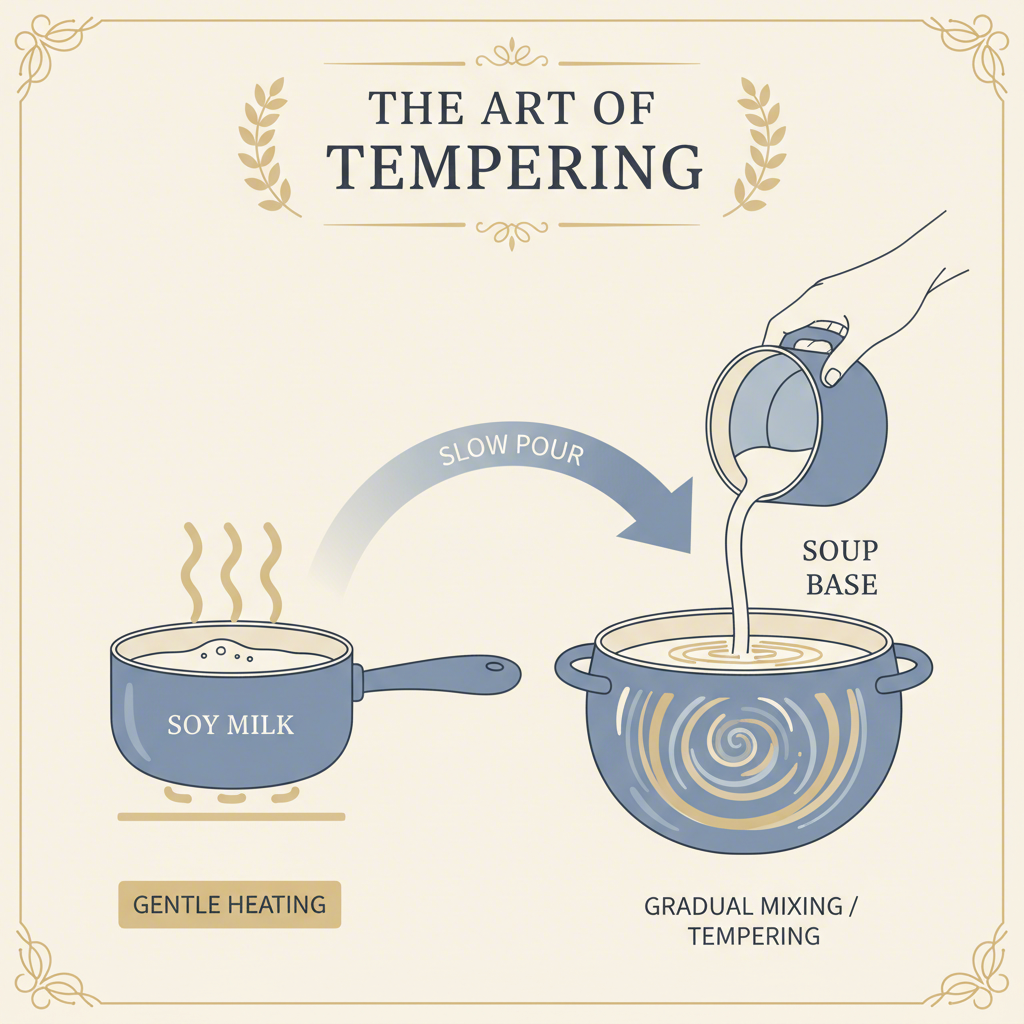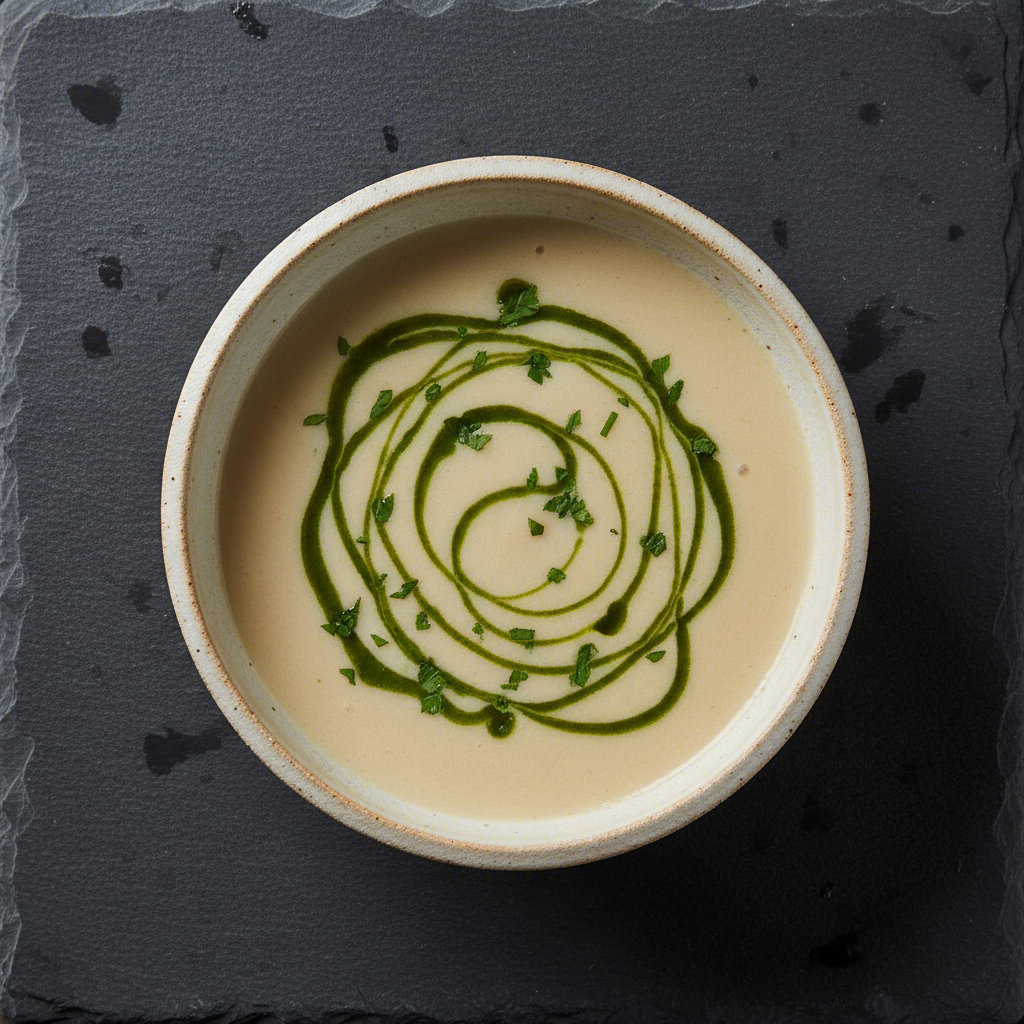TL;DR
Cooking with unsweetened soy milk is an excellent way to add creaminess to a wide range of dishes, both savory and sweet. It’s a versatile dairy-free alternative, but success hinges on one key technique: gentle temperature control. To prevent it from separating or curdling, always warm soy milk slowly and avoid adding it directly to boiling liquids. For savory recipes, ensure you’re using an unsweetened variety to maintain the proper flavor balance.
Mastering the Fundamentals: How to Cook with Soy Milk Without Curdling
Soy milk is a fantastic plant-based staple, but many home cooks are hesitant to use it in hot dishes for fear of one common problem: curdling. When the proteins in soy milk are exposed to high heat or strong acids too quickly, they can clump together, creating an unappealing, separated texture. Understanding why this happens is the first step to preventing it and unlocking soy milk’s full potential in your kitchen.
The solution is simple and involves careful temperature management. Instead of pouring cold soy milk directly into a simmering soup or a hot sauce, you need to temper it. Pacific Foods explains that while soy milk handles heat better than many other plant-based milks, it’s best to warm it gently first. Pour the soy milk into a separate saucepan and heat it over low heat. Then, gradually whisk the warm milk into your main dish. This slow introduction allows the proteins to adjust without shock, ensuring a smooth, creamy consistency every time.
This technique is crucial in dishes like the Japanese Soy Milk Hot Pot (Tonyu Nabe). In her recipe, Nami from Just One Cookbook specifically instructs to warm the unsweetened soy milk before adding it to the dashi broth to create a stable, savory base. This gentle process prevents the broth from breaking while it simmers with vegetables and protein. By mastering this fundamental skill, you can confidently use soy milk to create velvety textures in any hot preparation.
To ensure success every time you cook, follow these golden rules:
- Always Use Unsweetened for Savory: Sweetened or flavored soy milks contain added sugars and vanilla that will clash with savory dishes. Tasting Table warns that this is one of the biggest mistakes, as it can completely throw off the flavor profile of your meal. Always double-check the carton.
- Heat Gently and Gradually: Never boil soy milk or add it cold to a boiling liquid. Temper it by warming it separately and adding it slowly.
- Add Acid Last: If your recipe includes acidic ingredients like lemon juice, vinegar, or tomatoes, stir them in at the very end, after the soy milk has been incorporated and the dish is off the heat.
- Stir Consistently: When heating soy milk, stir it regularly to distribute the heat evenly and prevent it from scorching on the bottom of the pan.
Savory Creations: From Creamy Pastas to Hearty Soups
Unsweetened soy milk’s neutral flavor profile makes it an incredibly versatile base for a myriad of savory dishes. Unlike coconut milk, which imparts a distinct sweetness, or oat milk, which can be thin, soy milk provides creaminess and body without overpowering other ingredients. This makes it ideal for everything from rich pasta sauces and hearty chowders to spicy curries and umami-packed ramen broths.
However, because soy milk has a lower fat content than dairy cream, you may sometimes need to employ a few techniques to achieve the desired richness and thickness. To create a velvety sauce for a vegan mac and cheese or a creamy pasta, start by making a roux with plant-based butter and flour before whisking in the warm soy milk. For soups and stews, adding thickening agents like a cornstarch slurry, nutritional yeast for a cheesy flavor, or even pureed vegetables can enhance the texture and mouthfeel.
Choosing a quality product is also key. Some lower-quality soy milks can be watery, which will dilute the final dish. For the most consistent and delicious results, opt for a reputable, creamy brand. For culinary enthusiasts who want complete control over texture and freshness, making your own plant-based milk at home is another excellent option. If you’re exploring this route, Soy Milk Quick offers detailed reviews and comparisons of the best plant milk makers to help you find a machine that fits your needs.
To inspire your next meal, here are some proven applications for unsweetened soy milk in savory cooking:
| Dish Type | Key Technique | Flavor Pairings |
|---|---|---|
| Creamy Soup (e.g., Fish Chowder, Vegan Gumbo) | Temper the milk before adding; use a roux for extra thickness. | Cajun spices, thyme, smoked paprika, bay leaf. |
| Pasta Sauce (e.g., Carbonara, Creamy Tomato) | Create a roux first; add nutritional yeast for a cheesy flavor. | Garlic, onion, basil, oregano, nutmeg, black pepper. |
| Asian Hot Pot or Ramen Broth | Combine with dashi and miso; heat gently without boiling. | Miso, sesame, ginger, chili crisp, soy sauce. |

Sweet Endings: Baking and Desserts with Unsweetened Soy Milk
While its savory applications are vast, unsweetened soy milk is also a powerhouse ingredient in baking and dessert making. One of its greatest advantages is control; by starting with an unsweetened base, you can manage the precise amount of sugar in your recipe, which is crucial for achieving the right flavor and texture in everything from muffins to puddings. Using sweetened soy milk can inadvertently make your baked goods overly sweet and can alter how they bake.
One of the most valuable tricks for baking with soy milk is creating a vegan buttermilk substitute. As highlighted by Tasting Table, you can easily replicate the acidity and leavening power of buttermilk by adding an acid to your soy milk. Simply combine one cup of unsweetened soy milk with one tablespoon of lemon juice or apple cider vinegar. Let the mixture sit for about five to ten minutes until it curdles slightly. This homemade “buttermilk” adds tenderness and a slight tang to pancakes, waffles, quick breads, and cakes, helping them rise beautifully.
Soy milk provides excellent moisture in baked goods and can typically be substituted for dairy milk in a 1:1 ratio. It works wonderfully in recipes like banana bread, muffins, and even creamy desserts like tofu pudding (douhua) and chocolate mousse. However, it’s important to be aware of its natural color. Because soy milk is cream-colored rather than pure white, it will produce off-white frostings and glazes. If a pristine white finish is essential, you can either use a touch of white food coloring or opt for a different plant-based milk like coconut for that specific application.
Common Mistakes and Pro-Tips for Perfect Results
Cooking with a new ingredient always involves a learning curve. While soy milk is incredibly forgiving, a few common missteps can lead to disappointing results. By avoiding these pitfalls, you can ensure your dishes are delicious every single time. Most of these issues stem from treating soy milk as an exact replica of dairy milk without accounting for its unique properties.
The most frequent error is grabbing the wrong carton at the store. Using sweetened or vanilla-flavored soy milk in a savory dish like a creamy soup or pasta sauce is a guaranteed way to ruin the meal. The added sugar creates a jarring, unpleasant flavor. The simple pro-tip is to always read the label carefully and double-check that you are buying the “unsweetened” or “original” variety for your savory cooking needs.
Another common mistake is overheating. As discussed, soy milk’s proteins are sensitive to rapid temperature changes. Pouring it directly into a boiling pot of soup or cranking the heat up too high will cause it to curdle instantly. The solution is patience. Always heat soy milk gently on its own first or add it to your dish after turning down the heat, stirring constantly until it’s incorporated. Never let it reach a rolling boil.
Finally, don’t underestimate the difference between brands. Some brands produce a richer, creamier soy milk, while others are more watery. A thin, diluted soy milk won’t provide the same body or richness in a sauce or baked good. If you find your results are lackluster, try a different brand or look for one with a higher protein and fat content. This will give you a much creamier and more satisfying final product.

Frequently Asked Questions
1. How to use soy milk in cooking?
Soy milk is a versatile ingredient used as a 1:1 substitute for dairy milk in most recipes. For hot savory dishes like soups and sauces, warm it gently before adding to prevent curdling. In baking, it provides moisture for muffins, cakes, and pancakes. You can also create a vegan buttermilk by adding a tablespoon of lemon juice or vinegar to a cup of soy milk.
2. What is unsweetened soy milk used for?
Unsweetened soy milk is used for a wide variety of culinary applications where you need a creamy liquid without added sugar. It’s the preferred choice for savory dishes like creamy pastas, soups, chowders, and homemade dressings. It is also ideal for baking, as it allows you to control the sugar content in your recipes for desserts, quick breads, and puddings.
3. What are some common uses of soy milk in cooking or baking?
Common uses include creating creamy, dairy-free sauces for pasta, making hearty soups and curries, and as a liquid base for smoothies. In baking, it’s used in recipes for muffins, pancakes, waffles, and quick breads. It’s also a key ingredient in many vegan desserts, such as puddings, mousses, and homemade ice cream.
